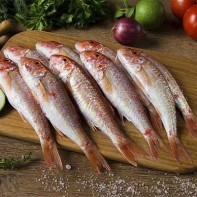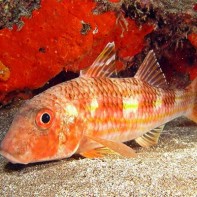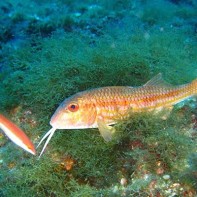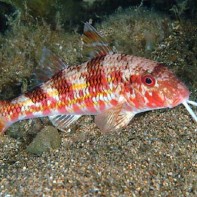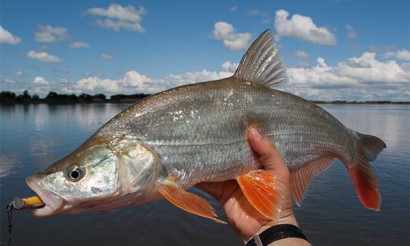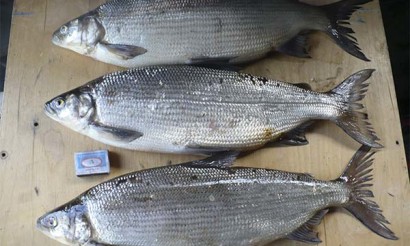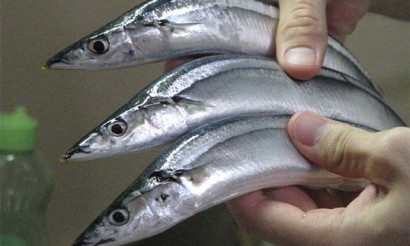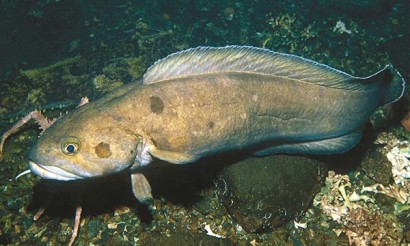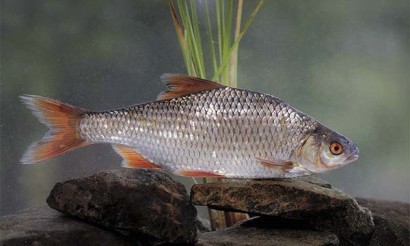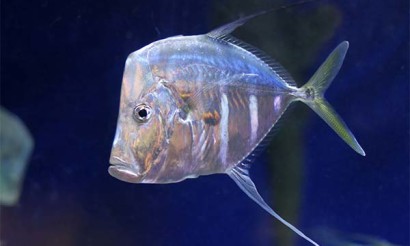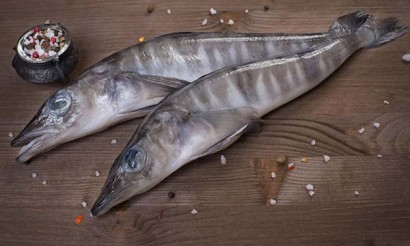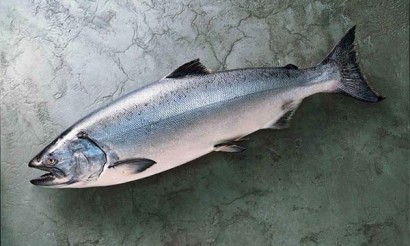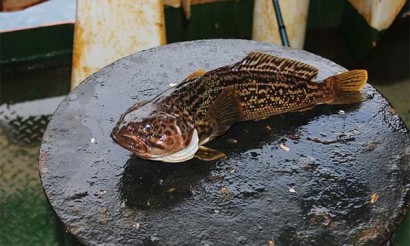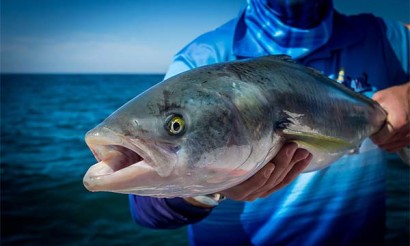Mullet fish: photo, description, useful properties and recipes
Mullet or sultanka (Mullus barbatus) - a small-sized fish with dietary low-calorie meat, rich in protein, antioxidants, Omega-3 fatty acids. Fish fillet with excellent taste qualities is useful for children, pregnant, lactating women and people of older generation. Connoisseurs claim that sultana dishes banish sleepiness, improve mood, and deliver true gastronomic pleasure.
- Red mullet: what kind of fish it is, how it looks and where it is found
- How does it look?
- Where does it live?
- What it eats
- Breeding process
- Variety
- Species population and status
- How to catch mullet: when, where and on what?
- When to catch
- Where to catch
- What to catch
- Composition and calories
- What is red mullet good for the human body
- Harm and contraindications
- Rules of storage
- Where to buy and how much costs
- How to cook mullet fish deliciously: recipes
- In the oven
- In the pan
- Mullet fish soup
- Q&A
- What does red mullet taste like?
- Fat or not?
- Are there many bones?
- Interesting facts
Red mullet: what kind of fish it is, how it looks and where it is found
The common mullet family of red mullet order of Cephalopods - gregarious fish with an average body length of 10-20, maximum - 30 cm. Sea mullet lives in the bottom layers of coastal areas at a depth of 3-30 m. It prefers muddy, sandy or fine pebble bottoms.

Young mullets feed near rocky shores with rich aquatic vegetation. With the onset of cold weather shoals move out into the open sea, descending to a depth of three hundred meters.
What does it look like?
An unsightly-looking fish has an elongated length, flattened at the sides of the body with short pale yellow fins and split tail.
At the disproportionately large head with high-set eyes stands out an unusual, almost plumb snout. The sultan's mouth is small with bristly teeth, from under the lower jaw hangs two thick antennae. Coloration is uneven - abdomen silver, body, covered with large scales, red-yellow-orange.
Where does it live
Representatives of the mullet family lives in the eastern Atlantic, on the western Pacific coast, in the waters of the Indian Ocean.
In Russia, the mullet is common in the Black Sea and Sea of Azov. The mullet is fished mostly near the Crimean Peninsula and in the Kerch Strait.
What does it feed on?
The bottom fish use their antennae-tentacles to find and eat small invertebrates. The diet of the sultana includes amphipods, mollusks, crabs, sea worms, less often - fry.
The breeding process
Ready to reproduce mullets become ready by the second or third year of life. Spawning, which takes place at a depth of 15-50 m, begins in May and lasts until the end of summer.
The fecundity of females depends on their age and weight and amounts to 4-88 thousand eggs. Portionally laid eggs rise to the water surface. Hatching occurs after a few days.
For the first two months the fry stay in the surface layers, feeding on plankton. Iridescent silver coloration well camouflages them from predators. When the body length reaches 4 cm, the mullets head for the coast, where they sink to the bottom. By this time, their coloration becomes similar to that of their parents. Young that have survived the winter are difficult to distinguish from adults by spring.
Varieties of
Ichthyologists distinguish four species of mullet:
Common sultana.
The Black Sea and European subspecies differ only in the area of distribution. Representatives of the species are common in the Mediterranean, Black Sea, Azov Sea and in the eastern part of the Atlantic Ocean. From other species, the common sultanka differs in coloration - silvery belly, yellow fins and reddish hull.
Golden mullet
The second name is the toothy mullet. It lives in the Indian Ocean, Pacific Ocean. The body, whose length rarely exceeds 20 cm, colored grayish-yellow, covered with bluish scales.
Argentine sultana
Common on the coast of northern Argentina and Brazil, the barabulka is similar in body shape to the common barabulka, but differs in coloration. Characteristic features of the species are yellow radial fins, pink abdomen, and red back.
Striped mullet
Area - the northeast Atlantic, the Mediterranean, Black Sea, Baltic Sea. Representatives of the species has a more hollow snout, longitudinal stripes on the body in red or yellow, and long antennae under the lower jaw.
Population and status of the species
Despite insignificant catching due to economic inexpediency, the number of the population decreases every year.
Ichthyologists attribute this fact to several reasons:
- Disturbance to the marine ecosystem. The number of larger fish of predatory species, which feed on spawn, fry mullet, increases.
- Ecological disadvantage of habitats. In the Black, Azov and Mediterranean Seas, where mullet fish are abundant, industrial wastes are discharged. More and more hotels are being built on the coast, new beaches and resort areas are being developed, and sea transport is constantly running, which pollutes the sea area.
- Ineffective fight against poachers. Despite the weak fishery, the interest of amateur fishermen to the sultan is not reduced. They do not always use permitted tackle and timing. More often the catch is during the spawning period, when the fish die without having swallowed the eggs.
Scientists have been suggesting for several years in a row to consider developing measures to restore the species and to ban fishing altogether. But so far, none of the countries has put the mullet in the Red Book.
The governments of the states believe that fears for the extinction of the species are unfounded, cardinal measures are inappropriate. This is explained by the unwillingness to lose profits from the tourist and restaurant business, based, among other things, on recreational fishing and tasting sultana.
How to catch mullet: when, where and on what?
To return home with a catch, first of all, determine the time, the place of fishing. In accordance with the depth and food preferences of the fish select a tackle and bait. One should take into account that there are certain restrictions on recreational fishing. It is allowed to fish, the length of which is not less than 8.5 cm.

When to catch
Mass yields occur in late spring and early summer and before the fish leave for wintering (September, October), before which the red mullet fattens up a lot. The best time of day for fishing is 4-9 o'clock in the morning.
Mullet eagerly takes bait at water temperature of 15°C and above in clear weather with little wind or drizzle.
Where to fish
If the sea has suddenly cooled after a big spring, look for mullet in shallow waters where the water is still warm. In summer in the heat the fish is caught from piers, harbor moles, where it is convenient to make long-distance casts. When choosing a place pay attention to coastal areas with mud, rocky or sandy bottom, overgrown with aquatic vegetation.
What to catch
Mullet is caught by float and bottom tackle. For long-distance throws use a float rod with five-meter bland, line diameter of 0.12-0.15 mm, a small pellet instead of a sinker. Particular attention is paid to the float. It can be mobile or fixed, but always with a long antenna to notice the weakest bites.
For inexperienced fishermen are good bottom fishing rods, including piker, feeder with bait containers-loads and interchangeable tips on the rod. They allow the fisherman to be more mobile on the pond.
The fish does not react to artificial baits. Shrimp, clam meat, sea worms, fish cuttings are used as bait. Since the mullet's mouth is small, the bait is pre-cut into small pieces. Otherwise, the fish simply will not be able to swallow it.
Composition and calories
Sultanas are rich in proteins, vitamins, minerals, unsaturated fatty acids and extractives that activate the secretion of gastric juices.
The composition of fish includes:
- Vitamins - group B, A, D, tocopherol, ascorbic acid, nicotinic acid.
- Trace elements - selenium, iron, copper, zinc, manganese.
- Macronutrients - phosphorus, sulfur, potassium, magnesium, sodium, calcium.
- Fatty saturated acids - palmitic, myristic, stearic, lauric.
- Omega 3 - DHA, DHA, EPA.
- Omega 6, 9 unsaturated fatty acids.
GI of 100 g of edible part of mullet - 19.4, 3.8, 0 g, respectively. The caloric value is 117 kcal.
How is the mullet good for the human body
Polyunsaturated fatty acids in the composition of mullet get rid of skin rashes, regulate the function of the nervous system, prevent cardiovascular diseases.
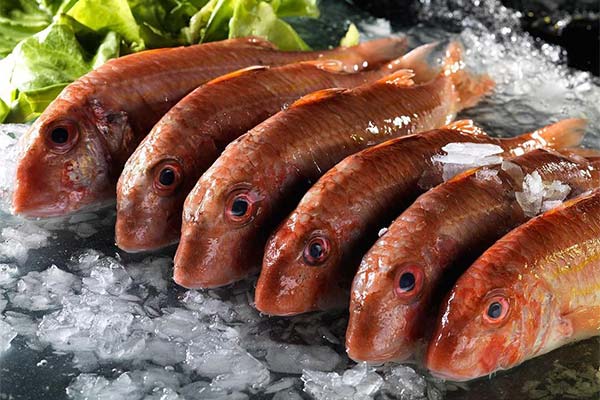
Other beneficial properties of fish:
- It stimulates the metabolism of fats and prevents their accumulation.
- Participates in the synthesis of hemoglobin, a number of hormones.
- Supports the health of the skin, mucous membranes, adrenal cortex.
- Increases immune status.
- Participates in hematopoiesis.
- Prevents the development of anemia, anorexia, rickets and osteoporosis.
- Quickly replenish the energy expended.
- Reduces recovery time after an illness, injury, surgery.
- Mineralizes bone tissue and tooth enamel.
- Regulates the water, acid, electrolyte balance.
- Normalizes the gastrointestinal tract.
- Strengthens the secretion of gastric juices, improves appetite.
- Reduces high blood pressure.
Consumption of fish is useful for obesity, problems with the thyroid gland. Sultana not only improves health, but also supports female beauty, strengthening hair, nails, making the skin clean and young.
The composition of 100 grams of sultana contains 66% of the daily rate of antioxidant selenium, which reduces the risk of atherosclerosis, viral mutation, binds and removes toxic substances, slows the aging of the body.
Harms and contraindications
The only contraindication to eating mullet is an allergy to fish and seafood.
Rules of storage
Chilled mullet is placed on ice in the refrigerator, where it retains its consumer properties for 48 hours. The freezer extends the shelf life to three months.
Sultanka jerky does not spoil up to six months in a glass jar, vacuum bag in the refrigerator, as well as in suspension if each fish is wrapped in parchment. In the freezer, dried mullet lies unchanged for up to one year.
Optimal storage conditions for dried fish - dark ventilated room with a temperature of 3-10 degrees, humidity 60-70%.
Carefully packed cold-smoked sultanas are kept in the refrigerator for a week, in the freezer for up to three months. Cold-smoked fish retains its gastronomic properties at 2-8°C for three days, in the freezer for 1.5-2 months.
The healthiest fresh fish, over time, it loses part of its gastronomic and medicinal properties.
Where to buy and how much does it cost
You can buy freshly frozen mullet in large chain supermarkets, specialized fish stores and online marketplaces at an average price of 570-700 p. per 1 kg. Hot-smoked fish is sold at 1500 p. per 1 kg.
How to cook mullet fish very quickly: Recipes
Fans of the Black Sea mullet cook it in a pan in breading, grilled, baked in the oven with spicy herbs, stewed in tomato juice or wine, salted, marinated, dried and smoked. The mullet makes a fragrant ear and a tasty soup.
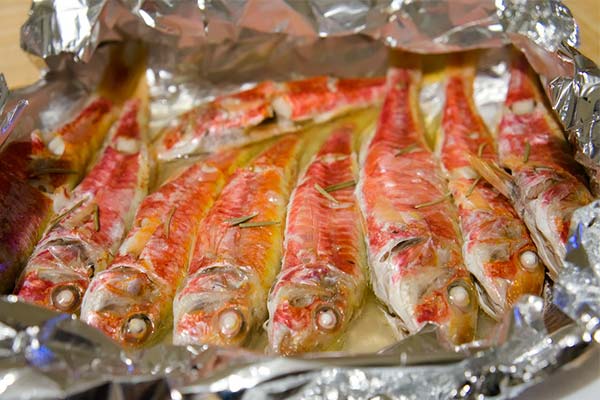
Fish is combined with white wine, rice, pasta, cream, seafood, asparagus, tomatoes, zucchini, bell peppers. Lime, lemon, thyme, oregano, and basil enhance the delicate flavor of meat.
In the oven
Fish baked on an onion pillow turns out juicy, does not stick to the form.
Products:
- 3 mullet carcasses;
- one lemon;
- 50 ml of vegetable oil;
- 4 medium sized onions;
- Two sprigs of rosemary;
- salt, pepper.
Preparation:
- Clean and gut the fish. Rinse under running water and dry.
- Mix salt, pepper, crushed rosemary leaves.
- Brush the carcasses with some oil, rub the seasonings. Leave to marinate for 20 minutes.
- Turn on the preheated oven to 200 degrees.
- Peel onions and cut into large rings. Mix the vegetable with oil and salt.
- Place in a baking tray lined with parchment, onions first, sultana on top.
- Bake in the oven for 20 minutes until the fish is browned.
Before serving, sprinkle the dish with chopped walnuts and garnish with a sprig of rosemary or mint leaves.
On the griddle
Fried mullet is a tasty and caloric dish. Its energy content more than doubles.
Ingredients for 3 servings:
- 0.5 kg of fish;
- 200 g of wheat flour;
- 50 g of corn starch;
- 50 ml of refined sunflower oil;
- ground pepper, salt;
- lemon, greens to serve.
How to prepare:
- Remove scales from carcasses with a spoon, shank knife under running water or in a basin. Scoop out the bellies, remove the viscera, rinse thoroughly and pat dry with paper towels.
- Combine and mix flour and starch. Season with salt and pepper.
- Roll each carcass in breadcrumbs and place in a hot pan.
- Fry both sides until golden brown.
Serve slices of lemon and herbs with the fried sultanas. Offer vegetable salad or slices with butter dressing, salted mushrooms, side dish of potatoes, rice.
Mullet fish soup
To make an easy but very tasty soup of 3 sultana carcasses, you will need a set of products:
- 1 carrot, onion;
- 50 g of rice;
- 40 ml of olive oil;
- 2 tubers of potatoes;
- 10 g green onion feathers;
- bay leaf, salt, black pepper in pepper.
Cooking steps:
- Remove the scales from the mullet. Remove the insides, rinse.
- Put a pot with 1.5 liters of cold water on the stove.
- Peel vegetables. Cut the potatoes and carrots into strips, cut the onions into small cubes.
- Put potatoes and rice into a pot with boiling water.
- Onions, carrots pass on a frying pan with oil until soft.
- When water with groats and potatoes comes to a boil, salt the broth, add bay leaf, peppercorns.
- After 10 minutes put the mullet in the pot. After boiling, remove the foam, so that the broth becomes transparent.
- Continue to simmer for another quarter of an hour.
- Remove the bay leaf.
Serve the fish soup with a sprinkling of herbs. Place a fish carcass in each plate.
Q&A
Healthy eaters and fish eaters alike have questions about the gastronomic properties of mullet.
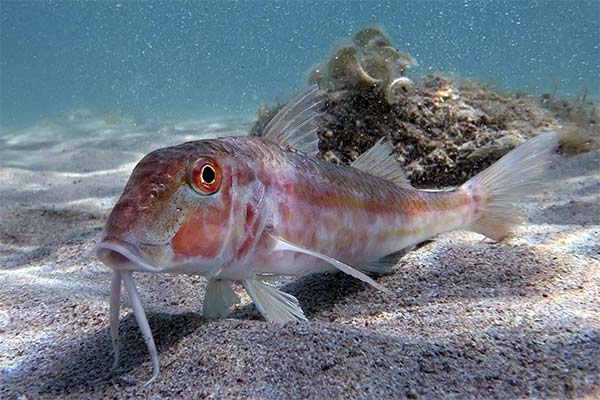
What does red mullet taste like?
The meat has a sweetish taste, in the dried form it resembles ram fish. Small mullets up to 25 cm long have a more tender flesh. Especially prized in the product is the creamy liver, which is considered a delicacy.
Fatty or not?
Sultanka meat is a dietary product with low fat content (less than 4%), so chefs do not recommend steaming the fish. It turns out unleavened.
Are there a lot of bones?
In addition to the backbone and rib bones in the meat of mullet there are small bones, which have to be removed with tweezers when filing.
Interesting facts
Surprising facts about mullet:
- The fish, known since ancient times, was popular in ancient Rome, where it was paid for not only with silver, but also with slaves.
- It is not necessary to gut the carcass, as there is no bile in it.
- Before cooking, the patricians were given a show where they watched the sultana change color from silver to purple-red.
The barabula is delicious in many forms - fried, baked, dried, and salted. Fish lovers get not only gastronomic delight from dishes made of sultanka. The product is able to improve the emotional state, support the health of many body systems.
«Important: All information on the site is provided solely for introductory purposes. Before applying any recommendations, you should consult with a specialist. specialist before using any of the recommendations. Neither the editors nor the authors shall be liable for any possible harm caused by materials."

